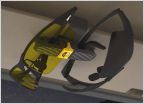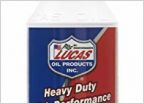-
Welcome to Tacoma World!
You are currently viewing as a guest! To get full-access, you need to register for a FREE account.
As a registered member, you’ll be able to:- Participate in all Tacoma discussion topics
- Communicate privately with other Tacoma owners from around the world
- Post your own photos in our Members Gallery
- Access all special features of the site
2005 and early 2nd-gen issues -- and how to fix them!
Discussion in '2nd Gen. Tacomas (2005-2015)' started by mk5, Sep 5, 2021.
Page 1 of 2
Page 1 of 2


 Gutting JBL amp+sub: wiring question
Gutting JBL amp+sub: wiring question Calling Pop and Lock experts
Calling Pop and Lock experts Sunglass Clips for Fat A** Sun Visors???
Sunglass Clips for Fat A** Sun Visors??? ECGS opinions and options
ECGS opinions and options Bed rails attachments.
Bed rails attachments.









































































